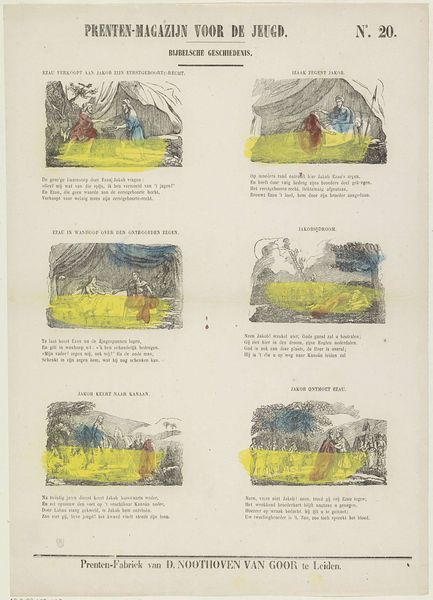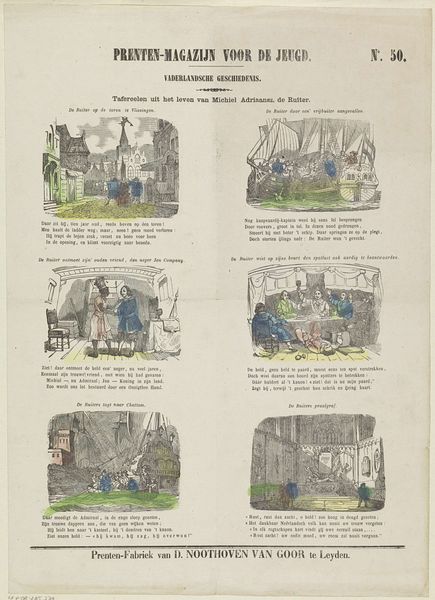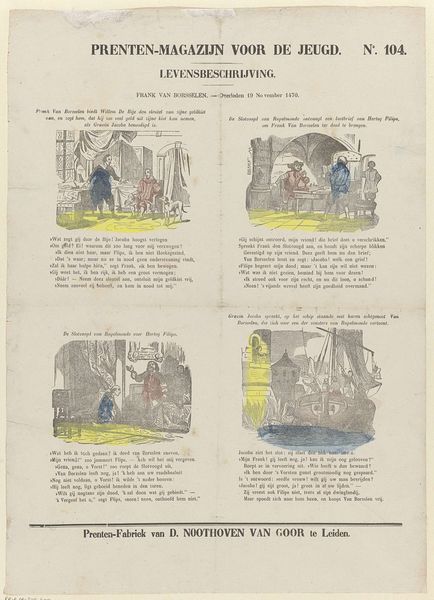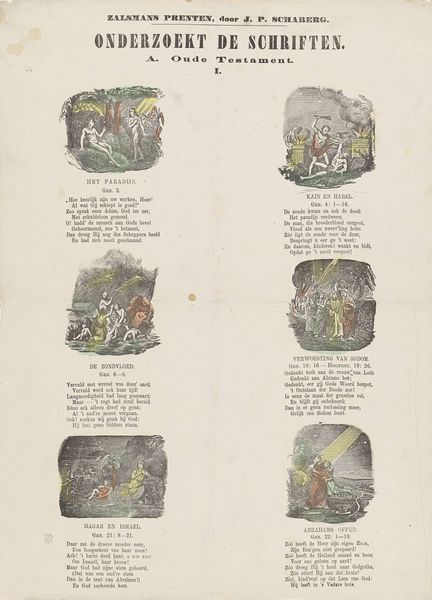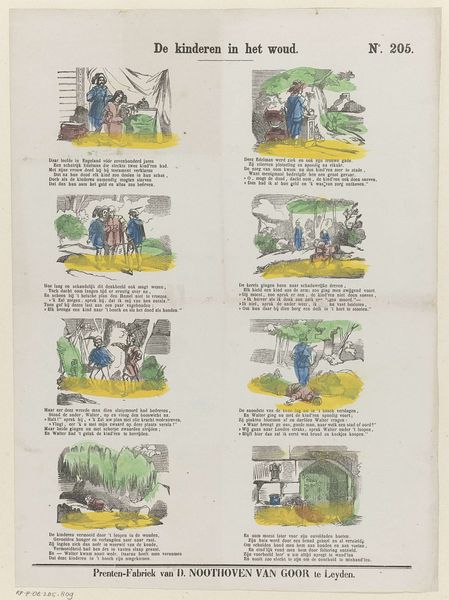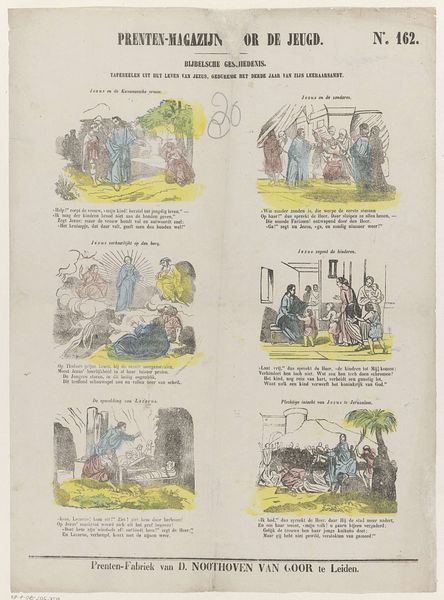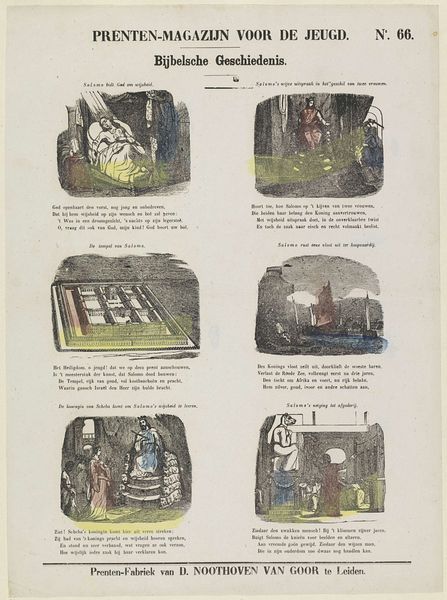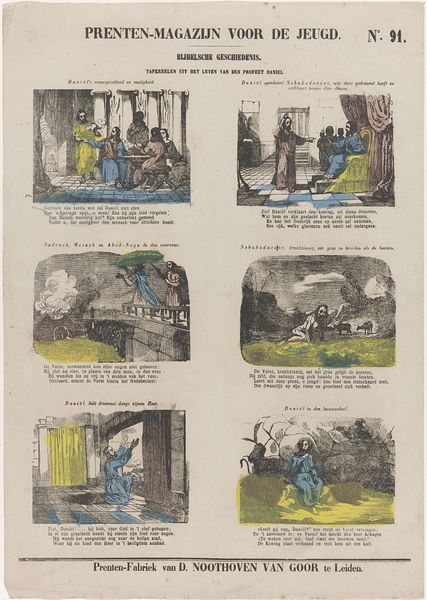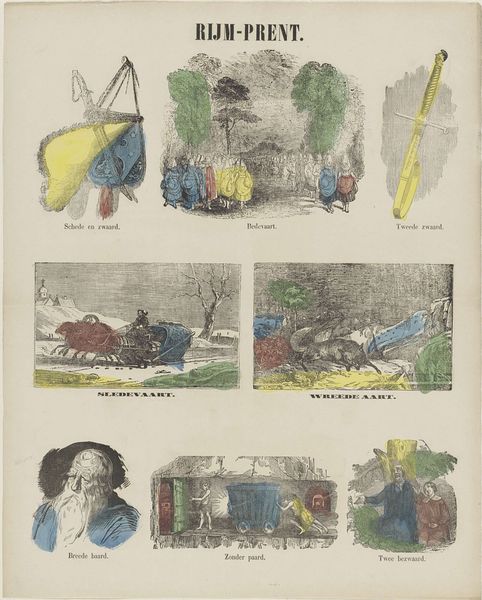
print, engraving
# print
#
genre-painting
#
history-painting
#
engraving
Dimensions: height 407 mm, width 303 mm
Copyright: Rijks Museum: Open Domain
Curator: This is “Scènes uit het Oude Testament,” or Scenes from the Old Testament, an engraving made between 1850 and 1881 by Dirk Noothoven van Goor. The prints seem designed for a children’s magazine, which is an interesting combination of the religious and the commercial. What strikes you about it? Editor: Well, I notice right away how each scene seems so compact, almost like a little stage setting. What do you think the artist was hoping to achieve by presenting these biblical narratives in this format? Curator: Precisely! It's meant for children. Van Goor likely aimed to disseminate religious knowledge in an accessible, easily digestible way. Note how each scene is coupled with text. The image-text pairing, common in print culture of the time, served to educate while subtly shaping moral values and beliefs. Consider the role of the Prenten-Fabriek, too—a factory producing prints, signifying how religious imagery was becoming mass-produced and widely distributed. Does that commercial aspect change how you view the images themselves? Editor: It makes me think about the role of illustration in shaping popular understanding of biblical stories. The scenes almost become… icons? Reproductions divorced from their complex historical context, existing to deliver morals. Curator: Exactly. Think about who controlled those narratives. This print serves not just as a window into biblical tales, but into 19th-century Dutch society, its values, and the growing influence of mass media. How might this interplay between art, religion, and mass production impact contemporary understandings of faith and history? Editor: That’s something I’ll definitely consider from now on; the relationship between accessibility, religious representation, and cultural influence!
Comments
No comments
Be the first to comment and join the conversation on the ultimate creative platform.
